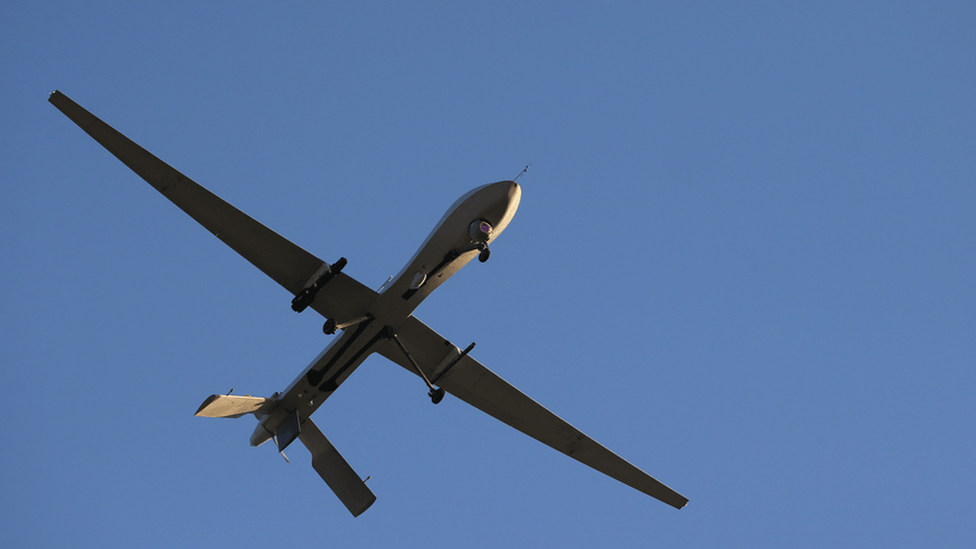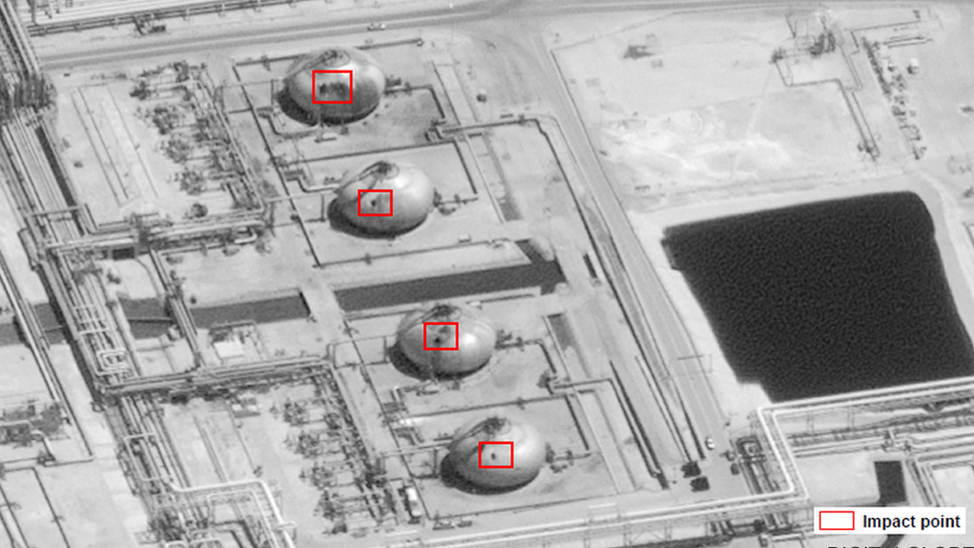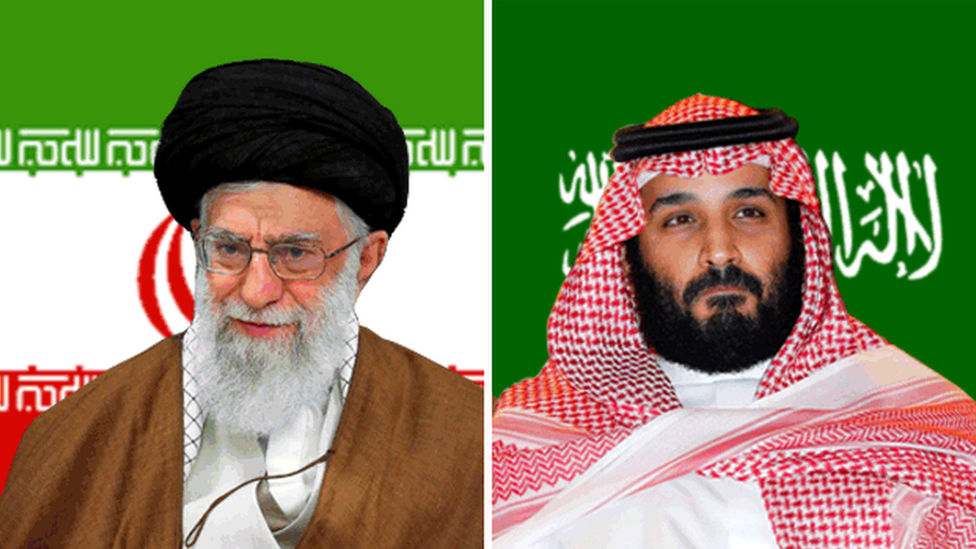Saudi Arabia oil attacks: UN 'unable to confirm Iranian involvement'
- Published

The attacks temporarily knocked out half of Saudi Arabia's crude oil production
The UN has reportedly so far been unable to confirm Iran was involved in drone and cruise missile attacks on two key Saudi oil facilities in September.
Saudi Arabia said Iran was behind the attacks, which temporarily knocked out half of the kingdom's crude production.
But a leaked report by the UN's secretary general says investigators could not corroborate that the drones and missiles were of Iranian origin.
Iran denied any role and noted a claim of responsibility from rebels in Yemen.
The Houthi movement, which is aligned to Iran, said it retaliated for air strikes on Yemen by a Saudi-led coalition backing government forces in the civil war.
What does the UN report say?
UN experts monitoring Security Council sanctions on Iran and Yemen travelled to Saudi Arabia to examine the debris of the drones and missiles.
On Tuesday, Secretary General António Guterres presented a report to the Security Council that summarised the experts' initial findings.
Saudi crown prince: Oil attack "hit the heart of the global energy industry"
"At this time, [the UN] is unable to independently corroborate that the cruise missiles and unmanned aerial vehicles used in these attacks are of Iranian origin," Mr Guterres wrote in the report, seen by Reuters and AFP news agencies.
But the report also noted that the Houthis "have not shown to be in possession, nor been assessed to be in possession" of the drones used in the attacks.
Mr Guterres said the UN investigation into the attack was continuing and that its results would be submitted to the Security Council when finished.
What happened in the attacks?
The Saudi defence ministry said 18 drones hit the Abqaiq oil processing facility - the world's largest - and four cruise missiles struck the Khurais oil field on 14 September. Another three missiles were fired towards Abqaiq but fell short.
Frank Gardner has a look at the damage, in an area normally closed off from journalists.
At Abqaiq, which is 330km (205 miles) north-east of Riyadh, the drones damaged 11 spheroid separation tanks used to separate gas from crude oil and stabilise it for export. Five stabilisation towers used to remove hydrogen sulphide from crude oil and two tanks that hold water removed from crude oil were also hit.
At Khurais, 190km to the south-west, four stabilisation towers were damaged.
The attack shut down 5.7 million barrels per day of crude oil production, which is about 6% of total global supply, and caused a spike in oil prices.
Who was blamed?
Houthi military spokesman Yahyia Sari said on 15 September that its forces had launched 10 drones from Yemen after receiving "intelligence" support from people inside Saudi Arabia.
Saudi Arabia says the direction of the strikes showed the missiles could not have come from Yemen
But Saudi defence ministry spokesman Col Turki al-Malki told reporters in Riyadh three days later: "This attack did not originate from Yemen. Despite Iran's best efforts to make it appear so, their collaboration with their proxy in the region to create this false narrative is clear."
"The attack was launched from the north and was unquestionably sponsored by Iran."
Col Malki identified the weapons used as Iranian Delta Wing unmanned aerial vehicles (UAVs) and Iranian-made Ya Ali land-attack missiles. He said such missiles had a maximum range of 700km (435 miles) - something that would exclude Yemen as the launch location.


US Secretary of State Mike Pompeo said: "This was a sophisticated attack. These weapons systems had ranges that could not have come from the Houthis. It is crazy for anyone to assert that they did."
But the Iranian government dismissed the allegation.
"There's no evidence and it would be a miracle to produce evidence because it did not take place," Foreign Minister Mohammad Javad Zarif said on 23 September. "Had we had been behind this, it would have been disastrous for Saudi Arabia."
The Houthis have repeatedly launched rockets, missiles and drones towards Saudi Arabia since 2015. UN experts have previously highlighted the existence of a Houthi drone, the UAV-X, which has an estimated maximum range of 1,500km.
- Published17 September 2019

- Published16 September 2019

- Published16 September 2019
